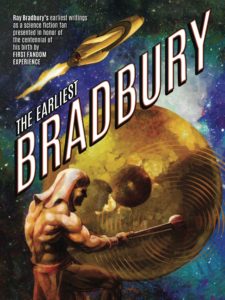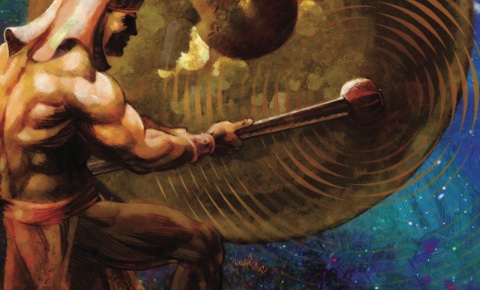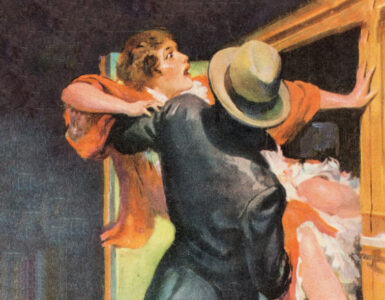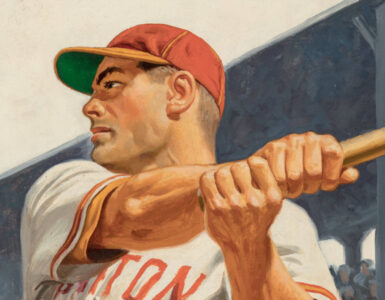An Exploration and Celebration of Ray Bradbury’s Earliest Writings as a Science Fiction Fan
 Ray Bradbury is an author who inspires fanaticism in his readers. A virtuoso composer with language, he sang the bodies electric and human, blending science fiction with eerie horror and mysticism to create stories that have stood the test of time. Today, he is perhaps the most revered of the science fiction Grand Masters of the 20th century. Among his fans are countless “completists,” who have made it a mission to absorb as much of his work as possible. We at First Fandom Experience are proud to fall into this camp.
Ray Bradbury is an author who inspires fanaticism in his readers. A virtuoso composer with language, he sang the bodies electric and human, blending science fiction with eerie horror and mysticism to create stories that have stood the test of time. Today, he is perhaps the most revered of the science fiction Grand Masters of the 20th century. Among his fans are countless “completists,” who have made it a mission to absorb as much of his work as possible. We at First Fandom Experience are proud to fall into this camp.
Bradbury’s work is, as the saying goes, part of the furniture of our minds. But at some point in our pursuit of finding every word written by Ray Bradbury, we tripped and fell down a rabbit hole. We wanted to access the time before Bradbury was a grandmaster; the time before he was a professional author. We wanted to explore the period when he was an amateur writer, testing the waters and honing his craft.
So, we began digging. Some of Bradbury’s pre-professional work, like FUTURIA FANTASIA — the fanzine he published in 1939 and 1940 — is well known. Bradbury published his own facsimile edition of the fanzine with Michael Graham and Craig Graham in 2007. But much of his other amateur work is obscure and unavailable to most readers, existing only in the archives of fanatical collectors or in special library collections. It has been our pleasure to locate these artifacts and compile them in full facsimile format in our new collection, THE EARLIEST BRADBURY.
To be clear, Bradbury entered the ranks of professional authors at a young age. Born in 1920, Bradbury entered organized science fiction fandom, formally, in October 1937, when he joined the Los Angeles Science Fiction League (LASFL). He sold his first story, “The Pendulum” (a collaboration with Henry Hasse), in August 1941. He received payment for the story on August 22, his 21st birthday. This period from 1937 to 1941 — from his entry into fandom to the publication of his first professional story — is the time we explore in THE EARLIEST BRADBURY.
Ray Bradbury’s early writing is everything one might expect to see from a young amateur destined for mastery. Many of his early articles, written under pseudonyms like “Kno Knuth Ing and D. Lerium Tremaine,” were silly and satirical, packed with puns and bad jokes, and shining examples of the kind of juvenalia that filled the pages of many fanzines of the time. Bradbury’s penchant for puns, sharp wit, and love of humor quickly earned him the title of the “funny man” of the LASFL.
But even as an amateur, we see glimpses of what Bradbury would become as an author. His talent with language is clear, not only in the delightful deployment of puns and wit in his humor pieces but in powerfully evocative phrases that pepper his early fiction. The iconic poetic style and otherworldly themes that would define much of his later work began to take shape in his early years as a young fan in the LASFL.
Bradbury became deeply entrenched in the Los Angeles science fiction community. Through it, he met many of the people who would help him on the road to a professional career. It was at the 100th meeting of the LASFL in August 1939 that Bradbury met Robert Heinlein, who had a profound impact on Bradbury’s career. Forrest J Ackerman edited IMAGINATION! — the first fanzine Bradbury wrote for — and famously lent Bradbury $50 so that he could attend the 1939 WorldCon. It was at WorldCon that Bradbury met Julius Schwartz, who would later sell Bradbury’s first story.
For a Bradbury fanatic, the story of his early years as an amateur fan and writer is a fascinating prequel to his long professional career. It reveals a relentlessly jovial, if juvenile, writer pursuing mastery of a craft he deeply and authentically loved. It brings light to the many influences that shaped him and provides insight into a community of science fiction fans that produced not just Bradbury the Grand Master, but many others who went on to define the genre for decades.
As Bradbury fanatics, we hope to honor and celebrate Ray Bradbury’s legacy by exploring his earliest contributions to fandom. THE EARLIEST BRADBURY combines original artifacts with historical commentary to bring this story to life.
(PulpFest is pleased to welcome father and son, David and Daniel Ritter, as guest writers to our website. David is the Editor-in-Chief of First Fandom Experience, while Daniel serves as the organization’s Managing Editor. First Fandom Experience attempts to generate a more direct and visceral sense of what it would have been like to be an early science fiction fan, striving to preserve an essential part of cultural history in both letter and spirit.
We’d like to thank David and Daniel for their contribution to our celebration of the centennial of Ray Bradbury’s birth. Planned as one of the themes for this year’s PulpFest, we’ll continue our salute to the “Poet of the Pulps” in the pages of our annual program book, THE PULPSTER. Watch for further details about this very special issue, right here, later this month.
THE EARLIEST BRADBURY — featuring cover art by Overstreet Hall of Fame member, Mark Wheatley — is now available from First Fandom Experience for $125, postage paid. Please visit their website for further details.)







